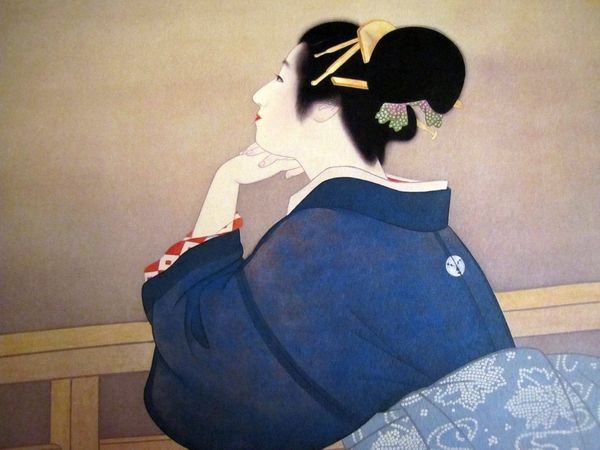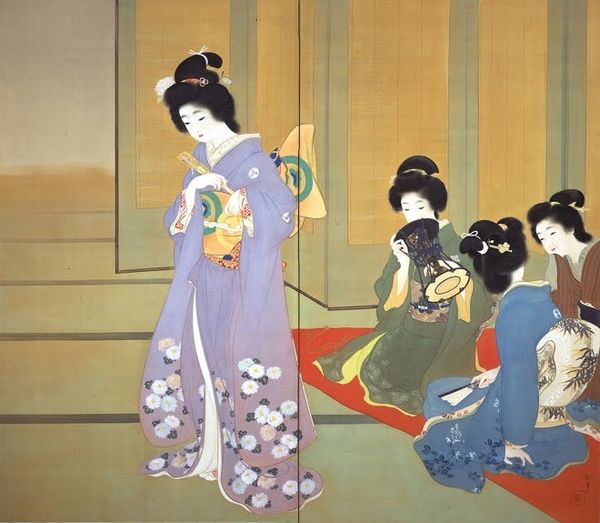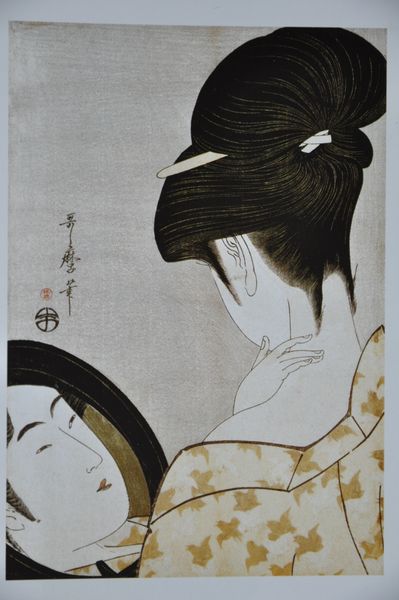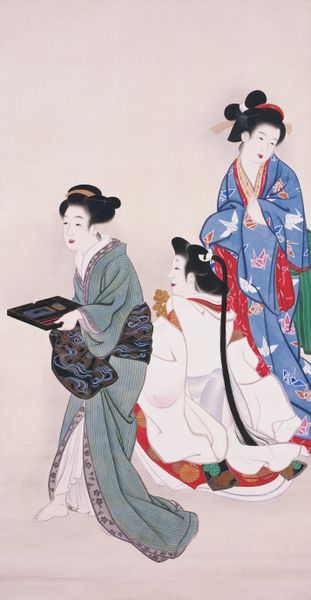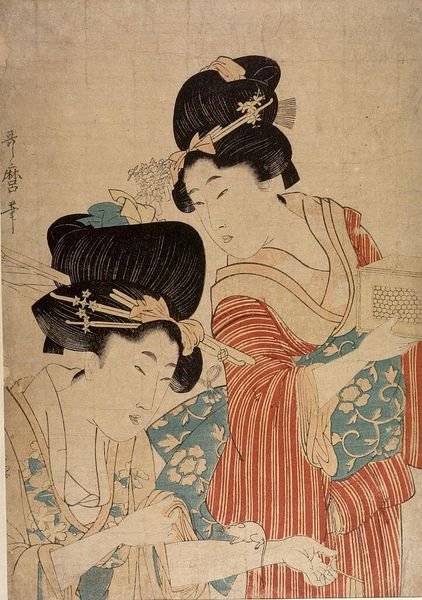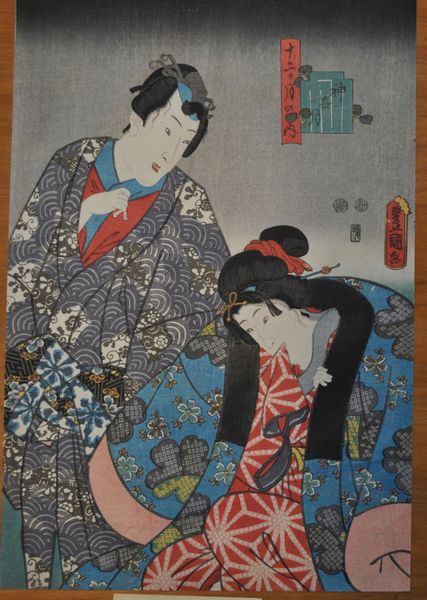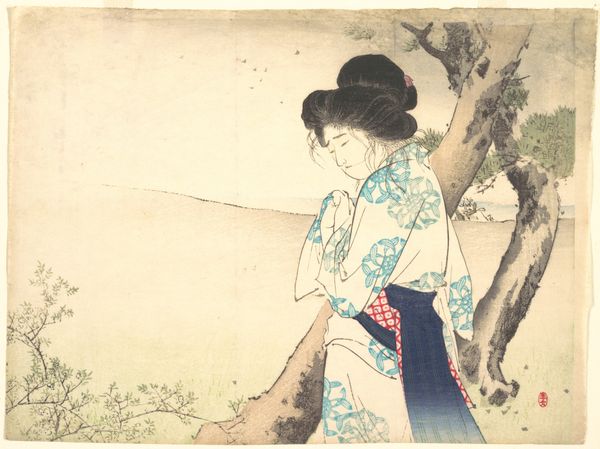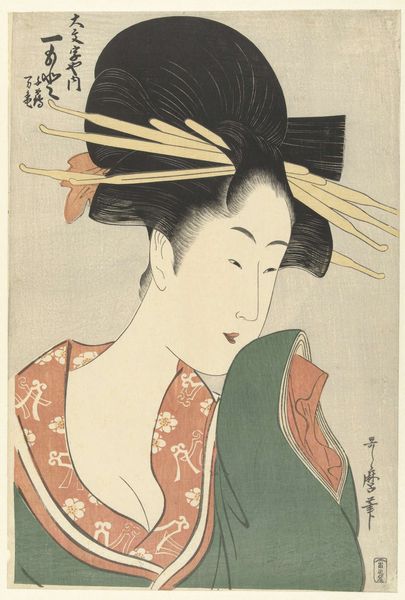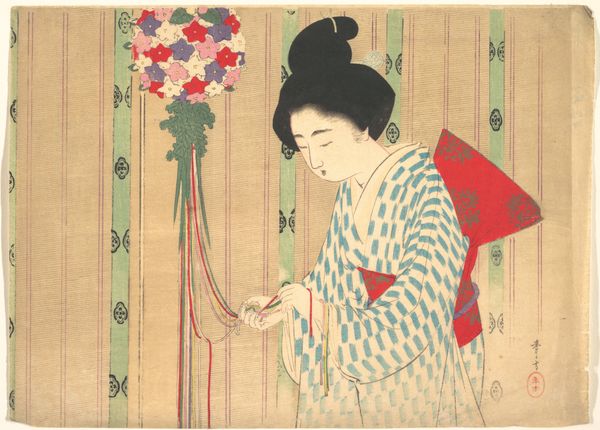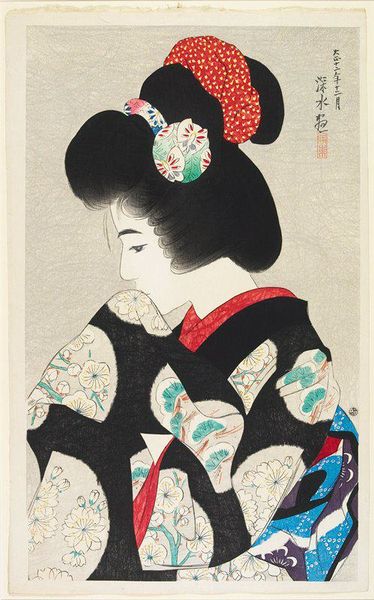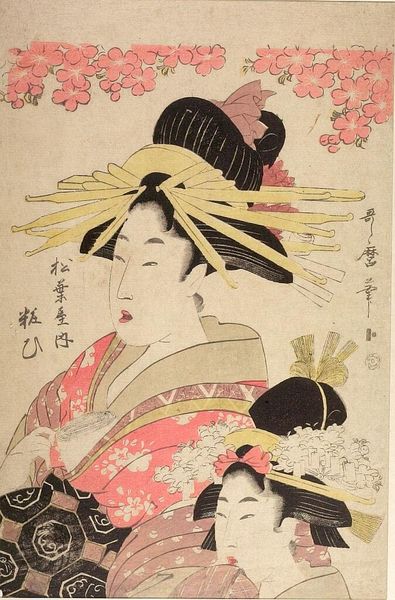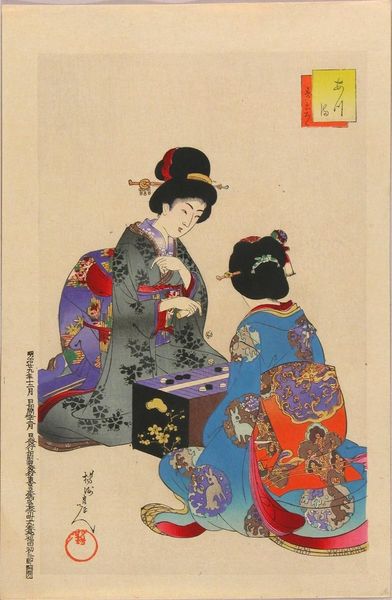![Untitled [Two women] by Kajita Hanko](/_next/image?url=https%3A%2F%2Fd2w8kbdekdi1gv.cloudfront.net%2FeyJidWNrZXQiOiAiYXJ0ZXJhLWltYWdlcy1idWNrZXQiLCAia2V5IjogImFydHdvcmtzL2FkMzE2YmEwLTgzMzYtNGZiYi04ZTBiLTM4MjI0MDE2MzJiNi9hZDMxNmJhMC04MzM2LTRmYmItOGUwYi0zODIyNDAxNjMyYjZfZnVsbC5qcGciLCAiZWRpdHMiOiB7InJlc2l6ZSI6IHsid2lkdGgiOiAxOTIwLCAiaGVpZ2h0IjogMTkyMCwgImZpdCI6ICJpbnNpZGUifX19&w=1920&q=75)
woodblock-print, print, ink, woodblock-print
#
portrait
#
woodblock-print
# print
#
asian-art
#
ukiyo-e
#
figuration
#
historical fashion
#
ink
#
woodblock-print
Dimensions: 7 3/8 × 9 9/16 in. (18.73 × 24.29 cm) (sheet)
Copyright: No Copyright - United States
Curator: Here we have an untitled woodblock print by Kajita Hanko, dating from around the 19th century. It's currently part of the Minneapolis Institute of Art's collection. Editor: It has such a quiet, contemplative mood. The two figures, rendered in these muted colors, almost seem lost in their own thoughts. The patterns and lines are very soothing to the eyes. Curator: Yes, and consider the labour involved. Each color requires a separate block meticulously carved and printed. It highlights the dedication inherent in Ukiyo-e production. And Ukiyo-e, "pictures of the floating world", were themselves commercial products catering to a growing urban audience. Editor: Thinking about that “floating world,” and who got to enjoy it, and who didn’t. Who were these women? The way they are standing shoulder-to-shoulder, separated, yet together feels representative of the restrictive roles and identities prescribed at the time for women and the complexities of their relationships. Curator: It’s tempting to speculate. Ukiyo-e prints often depicted courtesans and geishas, but also women from everyday life. We could examine this through the lens of fashion – look at the texture of the kimonos and the elaborate hairstyles. It really exemplifies that traditional print-making process with such careful detail. Editor: Exactly! That attention to fashion becomes almost subversive. It emphasizes how personal expression and cultural identity often intersected, reflecting class differences while navigating cultural restrictions. Curator: Absolutely. It brings an element of personal agency through these carefully designed textiles. And if you zoom in on their posture: both are self-possessed, independent women even if constrained by societal norms. It is a dance of autonomy. Editor: It challenges simple binary views on traditional gender roles, suggesting that identity is more of a complex intersectionality. We should embrace diverse perspectives that explore experiences shaped by identity and circumstances. Curator: It provides space to interrogate labour, processes, material production and the role of Ukiyo-e within the social structure of the time, adding additional layers of interpretation. Editor: It’s compelling how a seemingly quiet scene evokes so much nuanced historical and social reflection. Curator: Indeed, something so aesthetically serene embodies a lot more about art production than what meets the eye.
Comments
No comments
Be the first to comment and join the conversation on the ultimate creative platform.
